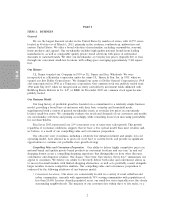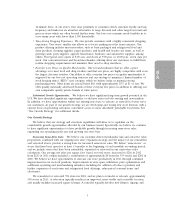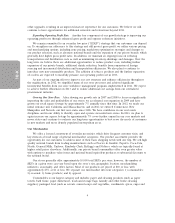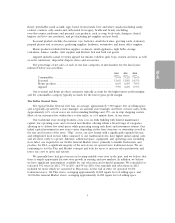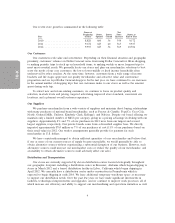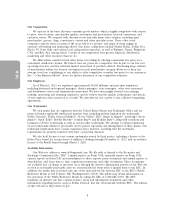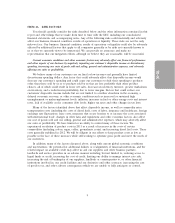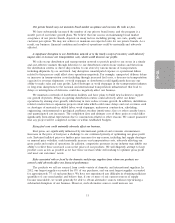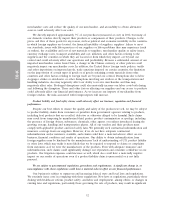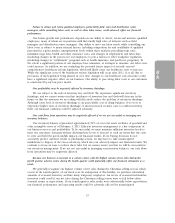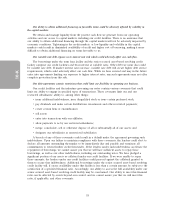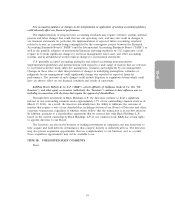Dollar General 2012 Annual Report Download - page 88
Download and view the complete annual report
Please find page 88 of the 2012 Dollar General annual report below. You can navigate through the pages in the report by either clicking on the pages listed below, or by using the keyword search tool below to find specific information within the annual report.
10-K
ITEM 1A. RISK FACTORS
You should carefully consider the risks described below and the other information contained in this
report and other filings that we make from time to time with the SEC, including our consolidated
financial statements and accompanying notes. Any of the following risks could materially and adversely
affect our business, financial condition, results of operations or liquidity. These risks are not the only
risks we face. Our business, financial condition, results of operations or liquidity could also be adversely
affected by additional factors that apply to all companies generally or by risks not currently known to
us or that we currently view to be immaterial. We can provide no assurance and make no
representation that our mitigation efforts, although we believe they are reasonable, will be successful.
Current economic conditions and other economic factors may adversely affect our financial performance
and other aspects of our business by negatively impacting our customer’s disposable income or discretionary
spending, increasing our costs of goods sold and selling, general and administrative expenses, and adversely
affecting our sales or profitability.
We believe many of our customers are on fixed or low incomes and generally have limited
discretionary spending dollars. Any factor that could adversely affect that disposable income would
decrease our customer’s spending and could cause our customers to shift their spending to products
other than those sold by us or to products sold by us that are less profitable than other product
choices, all of which could result in lower net sales, decreases in inventory turnover, greater markdowns
on inventory, and a reduction in profitability due to lower margins. Factors that could reduce our
customers’ disposable income include but are not limited to a further slowdown in the economy, a
delayed economic recovery, or other economic conditions such as increased or sustained high
unemployment or underemployment levels, inflation, increases in fuel or other energy costs and interest
rates, lack of available credit, consumer debt levels, higher tax rates and other changes in tax laws.
Many of the factors identified above that affect disposable income, as well as commodity rates,
transportation costs (including the costs of diesel fuel), costs of labor, insurance and healthcare, foreign
exchange rate fluctuations, lease costs, measures that create barriers to or increase the costs associated
with international trade, changes in other laws and regulations and other economic factors, also affect
our cost of goods sold and our selling, general and administrative expenses, which may adversely affect
our sales or profitability. We have limited or no ability to control many of these factors. We
experienced escalation of product costs in 2011 as a result of increases in the costs of certain
commodities (including cotton, sugar, coffee, groundnuts, resin), and increasing diesel fuel costs. These
costs generally stabilized in 2012. We will be diligent in our efforts to keep product costs as low as
possible in the face of these increases while still working to optimize gross profit and meet the needs of
our customers.
In addition, many of the factors discussed above, along with current global economic conditions
and uncertainties, the potential for additional failures or realignments of financial institutions, and the
related impact on available credit may affect us and our suppliers and other business partners,
landlords and service providers in an adverse manner including, but not limited to, reducing access to
liquid funds or credit, increasing the cost of credit, limiting our ability to manage interest rate risk,
increasing the risk of bankruptcy of our suppliers, landlords or counterparties to, or other financial
institutions involved in, our credit facilities and our derivative and other contracts, increasing the cost
of goods to us, and other adverse consequences which we are unable to fully anticipate or control.
9





